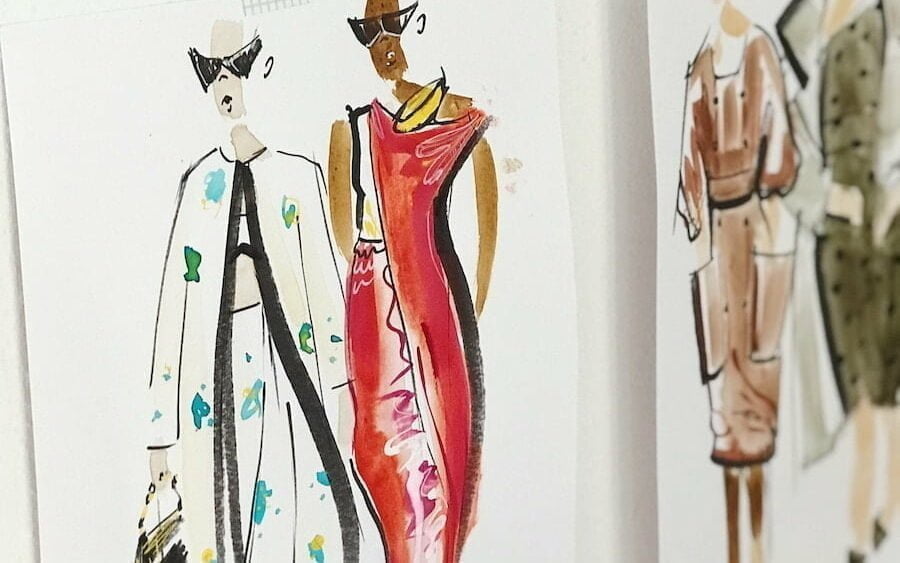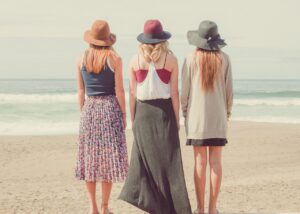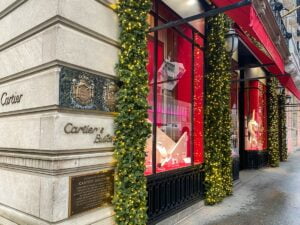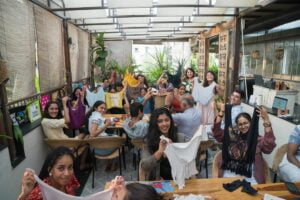ReSelfridges and Upcycling- a Sustainable Fashion Renaissance
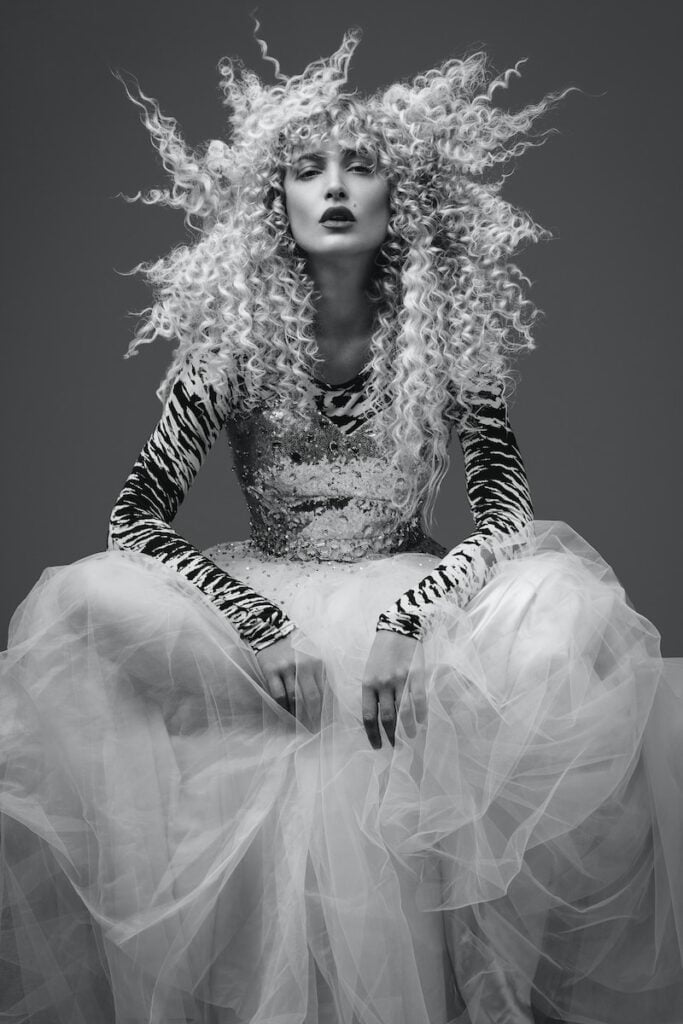
In a world where the fashion industry moves at breakneck speed, we are witnessing a quiet revolution. An eco-conscious renaissance that is breathing new life into fashion’s past glory. Upcycling, a sustainable fashion movement is rewriting the narrative of style, luxury, and climate change consciousness.
The fashion industry, renowned for its glamour and innovation, is also known for its rapid disposal of trends. With global clothing production doubling in the last two decades, it’s no secret that our planet is paying a hefty price. According to the Global Fashion Agenda, the fashion industry is responsible for a staggering 10% of global carbon emissions, making it one of the leading contributors to climate change. But amidst the chaos, upcycling breathes fresh air into old, forgotten garments, and it’s making waves for all the right reasons.
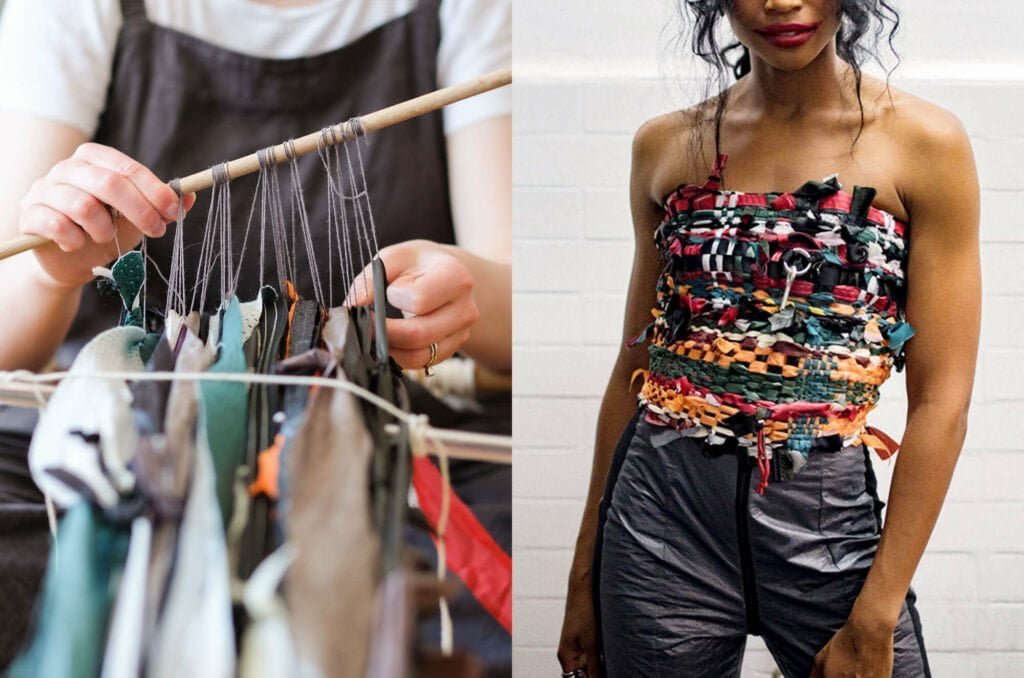
Photo credit: Selfridges
Upcycling: Giving Fashion a New Leaf of Life
At its essence, upcycling is a form of fashion alchemy. It takes pre-loved clothing and accessories and transforms them into new, unique pieces. The results are not only exquisite but also eco-friendly.
The power of upcycling lies in its ability to redefine memories and connections through fashion. That cherished vintage dress that once graced your grandmother can now grace you in a modern context. Each upcycled piece tells a story, carrying with it a rich history that transcends generations.
The numbers paint a compelling picture. According to the Ellen MacArthur Foundation, the fashion industry could save $500 billion annually by extending the life of clothing. Additionally, it could reduce carbon emissions by over 50% by 2030 if we adopt circular fashion practices like upcycling.
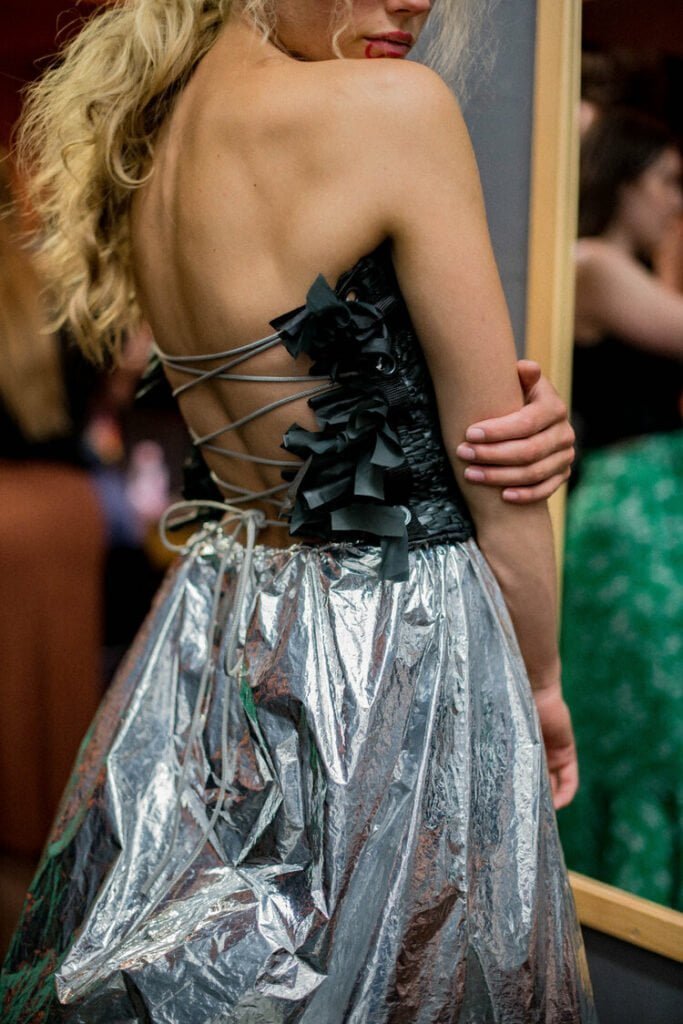
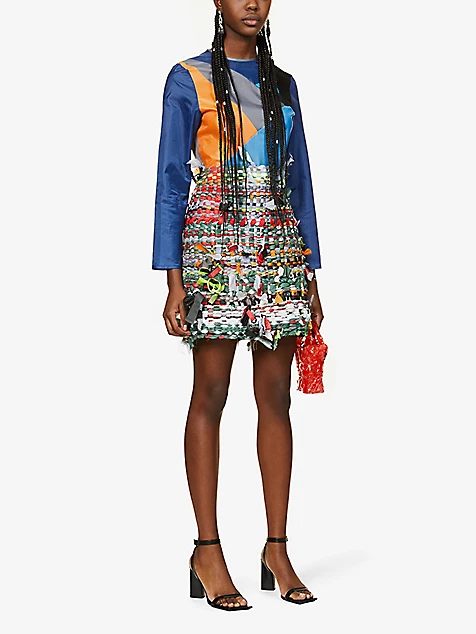
Chloe Baines: Weaving Sustainable Tales from Tent Fabric
In the summer of 2018, designer Chloe Baines found herself amidst the vibrant festival circuit, revelling in the music, camaraderie, and carefree spirit that define these gatherings. As Chloe wandered the festival grounds, she couldn’t help but notice the sea of abandoned tents, like forgotten relics from a temporary city. Little did she know that she will be so inspired and create a new, brave idea would give birth to a priceless brand.
“It was surreal,” Chloe recalls. “We were one of the last groups to leave the festival, but it looked as though nobody had left – there were tents still pitched across the entire campsite.” Inspired by the interconnected panels of these abandoned tents, Chloe saw the potential for transformation. She realized there is a striking resemblance to the garments she had been crafting during her studies at the London College of Fashion. Chloe Baines was walking into serendipity and the next step was to deliver her brand.
It’s not just about sustainability; it’s about reimagining the narrative of fashion. Chloe’s creative process begins with meticulously sourcing the tents from charities and clean-up initiatives. Once in her hands, these discarded canvases are cleaned and carefully deconstructed, ready to be reborn.
In her London-based workshop, Chloe entrusts the next crucial step of her creative process to her colleague, Alexandra Lucas. Here, the magic unfolds. Strips of recycled tent fabric, once destined to end up in garbage mountain, are woven together with precision and care, transforming into striking garments that seamlessly blend style and sustainability. This meticulous hand-weaving process yields zero-waste textiles that defy the conventional norms of fashion production.
But Chloe’s commitment to sustainability doesn’t stop there. Mindful of carbon emissions she is using local production and every piece garment is meticulously screen-printed using water-based ink in the heart of Dalston. It’s a commitment to her ethos of championing recycling and local craftsmanship at the same time.
Chloe’s designs speak a language of their own, a fusion of creativity and conscience. “With the sheer volume of clothes available, fashion can sometimes feel frivolous,” Chloe observes. “But upcycling tells a story, and you don’t have to start from scratch – adding some studs, diamantés, or cutting off sleeves adds value.”
Chloe Baines has emerged as a trailblazer in the realm of sustainable fashion, proving that fashion’s past can be an inspiring canvas for its future. Through her meticulous craftsmanship and unwavering commitment to eco-conscious practices, Chloe weaves a tale of transformation, where tents become timeless pieces of art, and where fashion redefines itself as a storyteller with a conscience. With Chloe Baines, every garment carries not just threads of fabric but threads of a remarkable narrative, one that celebrates the beauty of upcycling, and one that beckons us to reimagine fashion as a force for good.
Selfridges’ Sustainable Fashion Initiative: Project Earth
We discovered Chloe’s story while writing about Project Earth by Selfridges, a visionary project that is not just about shopping- it’s about rewriting the rules of the game and is designed to redefine the future of retail through its ground-breaking initiative. Luxury and sustainability rarely intersect, but Selfridges is forging a new path with it’s a call to action, a commitment to BETTER WAYS TO SHOP, and experience fashion. This initiative aims to redefine the norms of fashion consumption, focusing on eco-conscious choices and circularity.
We believe in the power to shop responsibly and we are proud to support Selfridges’ shopping experiences, all centred around upcycling, sustainability, and a passion for fashion. Here’s how you can be a part of this movement:
Refill Your Beauty Products
Selfridges now offers a beauty product refill service, reducing packaging waste and promoting a more sustainable approach to self-care.
The Luxury of Rental with HURR
Through a partnership with HURR, Selfridges allows customers to rent premium fashion pieces for special occasions, encouraging fashion enthusiasts to embrace a more sustainable way of dressing.
Pre-Loved Fashion Collections
Selfridges curates a selection of pre-loved fashion and accessories from well-known brands, giving customers the opportunity to own pieces of fashion history while supporting sustainability.
Repair and Upcycling Services
Selfridges offers repair and upcycling services for garments, extending their lifespan and reducing fashion waste. This service even extends to wedding dresses.
Explore Vintage Fashion
Selfridges’ vintage selection takes customers on a journey through fashion history, offering unique vintage pieces that reflect bygone eras.
Project Earth is Selfridges’ commitment to offering shoppers better, more sustainable ways to engage with fashion. It’s a step towards closing the loop on waste and creating a more eco-conscious approach to luxury shopping.
Selfridges is no longer a department store but destination for sustainable shopping experiences that re-imagine fashion and retail. Project Earth is their manifesto, a pledge to give you BETTER WAYS TO SHOP that help close the loop on waste.
The Upcycling Revolution– Your Role in the Movement
Designers and artisans worldwide are embracing upcycling with open arms. Old jeans are reborn as statement jackets, discarded silk scarves are transformed into flowing dresses, and vintage fabrics find their way into avant-garde couture. It’s a celebration of creativity that knows no bounds.
Celebrities are also championing the upcycling cause, turning heads on red carpets with gowns that are not just beautiful but also eco-friendly. Emma Watson, for example, proudly donned an upcycled Calvin Klein dress at the Met Gala, sending a powerful message that sustainable fashion can be chic and luxurious.
As a fashion enthusiast, you too can join the upcycling movement. It starts with a commitment to reimagining your wardrobe. Thrift stores, vintage shops, and online marketplaces offer treasure troves of fashion waiting for their second chance at life. Alternatively, consider upcycling your own garments or supporting local artisans who breathe new life into old pieces.
In conclusion, upcycling is more than just a trend; it’s a revolution that’s rewriting fashion’s script. It’s a declaration that style doesn’t have to come at the expense of our planet. By embracing upcycling, we can all play a role in ensuring fashion’s future is not just beautiful but also sustainable.
The next time you slip into an upcycled masterpiece, remember that you’re not just wearing clothing; you’re wearing a piece of history, a symbol of love and hope, and a nod to a brighter, more sustainable future for fashion.
Join us in creating awareness on upcycling and help fashion to meet responsibility, where every purchase becomes an act of change. Together, we can impact the fashion industry reduce waste, and make the world of fashion not just beautiful but sustainable too.
Do you want to share your story and inspire our readers ? Know that every story is paving the way for a brighter, happier future.
